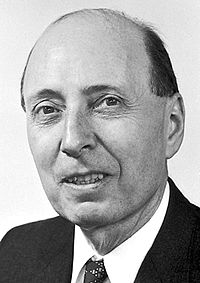Eugene Wigner
Scientist
Eugene Paul "E. P." Wigner (Hungarian: Wigner Jenő Pál; November 17, 1902 – January 1, 1995), was a Hungarian American theoretical physicist and mathematician. He received a share of the Nobel Prize in Physics in 1963 "for his contributions to the theory of the atomic nucleus and the elementary particles, particularly through the discovery and application of fundamental symmetry principles"; the other half of the award was shared between Maria Goeppert-Mayer and J. Hans D. Jensen. Wigner is notable for having laid the foundation for the theory of symmetries in quantum mechanics as well as for his research into the structure of the atomic nucleus. It was Eugene Wigner who first identified Xe-135 "poisoning" in nuclear reactors, and for this reason it is sometimes referred to as Wigner poisoning. Wigner is also important for his work in pure mathematics, having authored a number of theorems. In particular, Wigner's theorem is a cornerstone in the mathematical formulation of quantum mechanics.
Personal facts
| Alias (AKA) | Wigner E. P. (professional name); Wigner Pál Jenő (Hungarian) |
|---|
| Birth date | November 17, 1902 |
|---|
| Birth name | Eugene Paul Wigner |
|---|
| Birth place | Austria-Hungary , Budapest |
|---|
| Citizenship | |
|---|
| Date of death | January 01, 1995 |
|---|
| Place of death | New Jersey , Princeton New Jersey , United States |
|---|
| Residence | |
|---|
| Education | Technical University of Berlin |
|---|
| Known for | Wigner distribution function Wigner–d'Espagnat inequality Wigner semicircle distribution Relativistic Breit–Wigner distribution Newton–Wigner localization Jordan–Wigner transformation Bargmann–Wigner equations |
|---|
